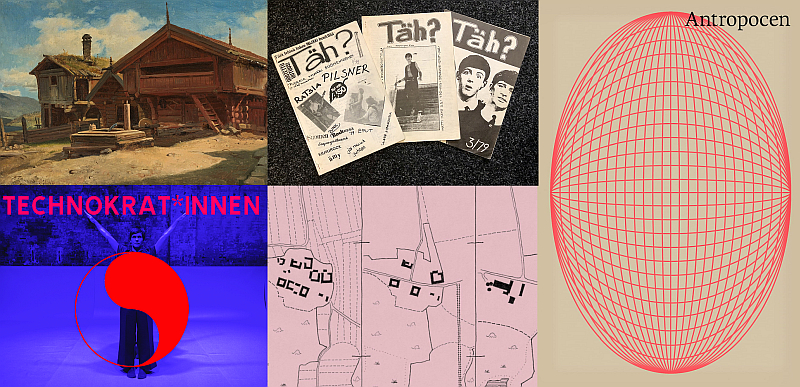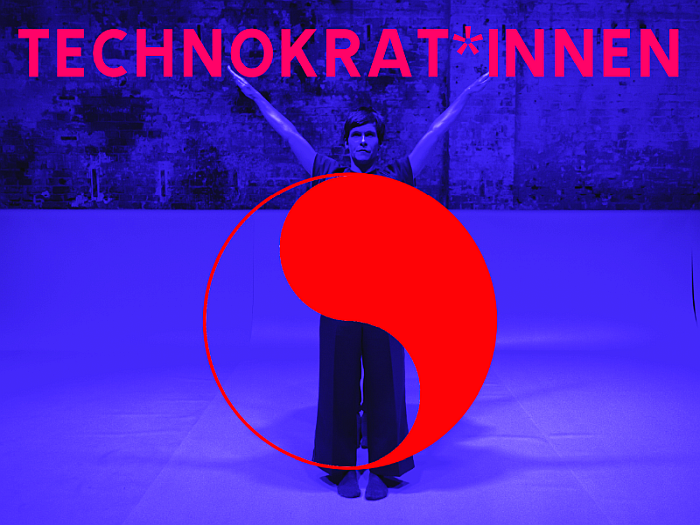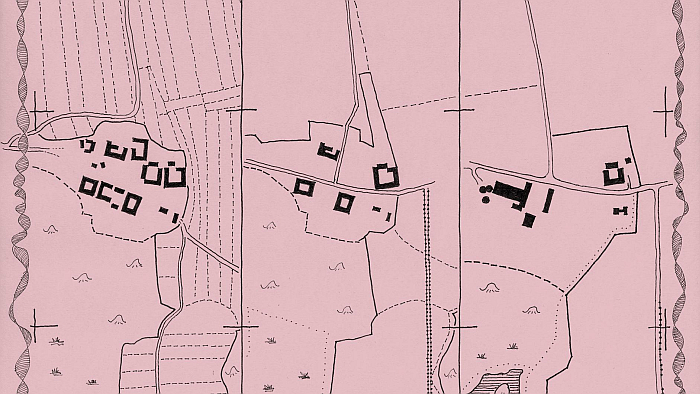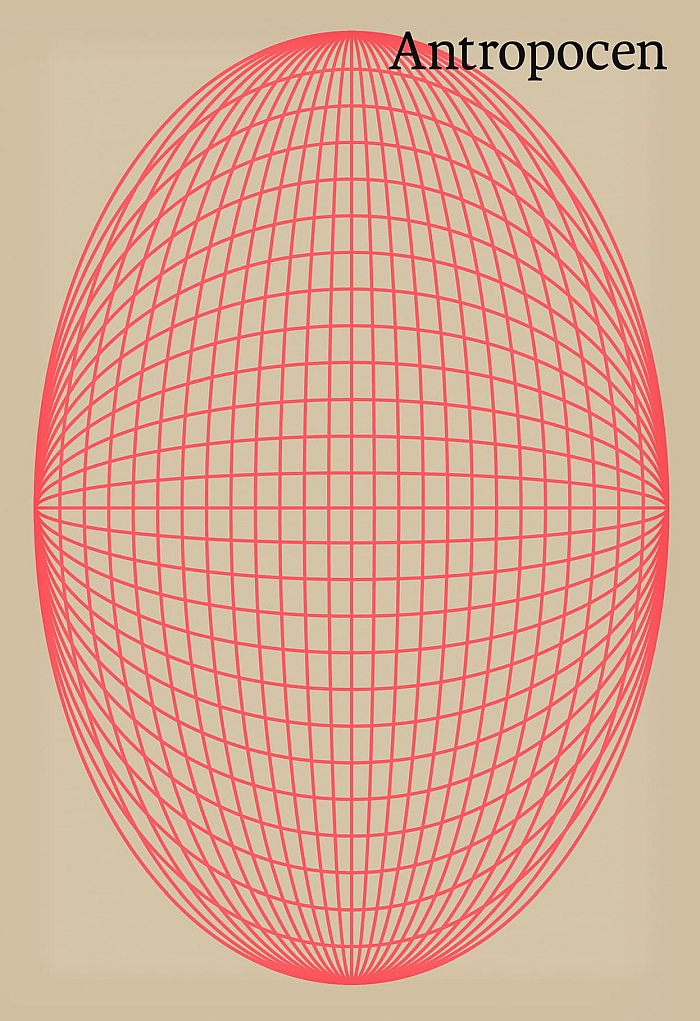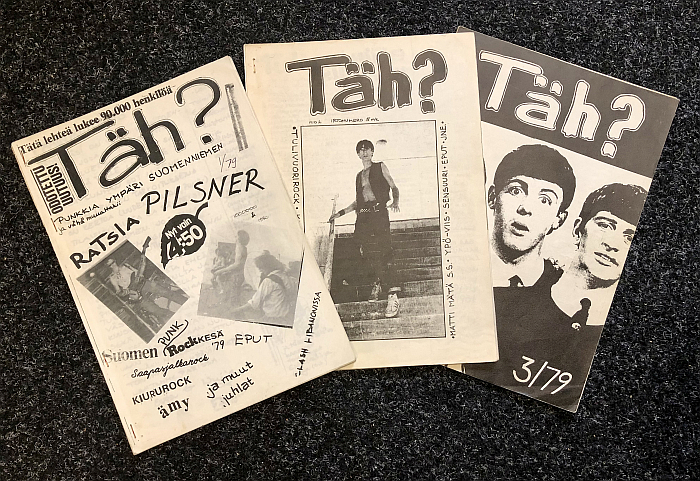5 New Architecture & Design Exhibitions for February 2024
For all that as a species we like to think that we are in control of the wider universe, like to think that our mastery of physics and mathematics has put us in charge, little underscores the fallacy of that position as neatly as the Gregorian calendar, an apparently flawless invention, one that defines our lives, where everything sits so snugly…. until every four years we have to add an extra day to stop it all going haywire. Unless that is the year is exactly divisible by 100, but not by 400, then it isn’t a leap year. The Gregorian calendar doesn’t really work, it is a rough approximation, has an inherent inaccuracy we’re aware of, we understand…… but don’t know how to fix beyond pretending its all normal and adding an extra day every four years. Or not, if its 1800, 1900, or 2100.
Other animals don’t need an extra day every four years, their worlds’ progress in keeping with the seasons. Plants don’t need an extra day. Why do humans?
The inaccuracy of the Gregorian calendar does however mean we all have an extra day in 2024 to do something meaningful, something truly worthwhile…. like visit an architecture and/or design exhibition.
Our suggestions for those meaningful, worthwhile exploits for the 29 days of February 2024, and beyond, takes us to Leipzig, Malmö, Katowice, Oslo and Jyväskylä…….
“Technokrat*innen” at Halle 14, Leipzig, Germany
Amongst the myriad movements that emerged in America in the early decades of the 20th century as the nation sought to find a way through the political, economic, social, et al turbulence of the period, was Technocracy; a term that although today is widely employed to generally describe any system of government by appointed experts rather than by elected politicians, was in the 1920s and 30s America a much more clearly defined concept, a specific movement, one which foresaw, amongst other novel realities, a four day week and a global basic income, the later based not on conventional financial currency but on energy currency: in effect proposed replacing money with energy certificates, the latter existent in a total volume concurrent with the available global energy, and which would be distributed amongst the global population. We would all, in effect, posses a share of the earth’s available energy. And thus an inter-War Technocracy movement, which, in many regards, makes arguments and proposes ways forward that are very contemporary. A contemporaneousness, and a rule by appointed scientists and engineers rather than elected politicians and unelected bankers, that takes on truly frighting overtones when one learns that one of the leading Canadian proponents of Technocracy, a leading figure in the Canadian Technocracy hierarchy, was a chiropractor by the name of Dr. Joshua Haldeman: a man who (hi)story has more popularly recorded as the maternal grandfather of Elon Musk. A relationship which helps one frame the urgent question of how much (more) unelected power are we happy for Musk to possess? Is Technocracy good in world populated by Elon Musks?
And while a discussion on Haldeman’s Technocracy in context of what his grandson might do within that system is well worth undertaking, Technokrat*innen at Halle 14 concerns itself with the play “technocrats”, a long since lost, forgotten, play from early 20th century America, recreated in context of Technokrat*innen by a collective of musicians, artists and choreographers and presented, if we’ve understood correctly, as a performance, as artefacts from the production and re-production process, and also, arguably primarily, as a conduit to reflections on early 20th century Technocracy, as an impetus to concern oneself with early 20th century Technocracy as both a movement itself and as a component of the wider social, economic and political reform movements of the 20th century, and also for reflections on what we can learn in our age of political, economic, social, et al turbulence from those responses a century ago.
And, yes, also to think about a global Technocracy with Elon Musk at the top. It might not be that far away…….
Technokrat*innen is scheduled to open at Halle 14 – Zentrum für zeitgenössische Kunst, Leipziger Baumwollspinnerei, Spinnereistr. 7, 04179 Leipzig on Friday February 2nd and run until Saturday March 30th. Further details can be found at www.halle14.net
“Allmänningen” at Form/Design Center, Malmö, Sweden
The question of ‘ownership’ of land is one that has long concerned human society, or perhaps more accurately long concerned the powers that be in commerce and industry based societies and monarchies; amongst innumerable societies the land on which we live is but something we steward for future generations. In commercial and industrial and monarchal societies, such as Europe, land it is something someone owns. And invariably defends. Builds a wall around.
However not all spaces in contemporary Europe are owned by individuals, some are (still) possessed by the Allmänningen, the General Public.
Based on a research project led by the Institute for Urban Research at Malmö University, Allmänningen promises to employ the commons and footpaths of the Malmö/Lund/Staffanstorp region of southern Sweden as the basis for a discussion on, if one so will, the value of land beyond the financial, that social, cultural, health, emotional and community value and thereby approach questions of spatial justice and access to open spaces against the background of the contemporary increasing pressures on land use, and increasing claims to land ownership.
A discussion that promises to employ and present both historical perspectives and contemporary surveys and analysis, and which in doing so should allow not only for differentiated perspectives on the myriad spaces of our urban and rural communities but also enable a more nuanced questioning of planning processes and the complex questions of consent. In southern Sweden and further afield.
Allmänningen is scheduled to open at Form/Design Center, Lilla Torg 9, 211 34 Malmö on Friday February 16th and run until Sunday June 2nd. Further details can be found at https://formdesigncenter.com
“Antropocen” at Galeria Rondo Sztuki, Katowice, Poland
According to the curators of Antropocen “the construction industry and life-cycle costs generated by buildings are responsible for over one third of world CO2 emissions”. We are in absolutely no position to question that, but a bit of quick research tends to imply it is, more or less, true. And so let’s assume it is. And then ask what we’re going to do about it.
And when?
A touring exhibition organised by Narodowy Instytut Architektury i Urbanistyki, NIAiU, that has been on the road in Poland since autumn 2022, Antropocen employs a so-called doughnut economics approach – a 21st century concept which places the optimal place for global society in a tightly defined space between a minimum of social standards and the ecological ceiling, that moment we start killing the planet – as the basis for proposing an architecture and construction that while perhaps not entirely avoiding all the harmful aspects of architecture and construction does at least limit them, considerably and fundamentally limits them.
Presenting a variety of projects by a roster international practitioners, projects historic and contemporary, realised and unrealised, tangible and speculative, and which in a variety of manners promise to approach architecture, construction and urban planning as relationships between human society and the wider environment rather than an imposition on it and/or as tool for advancing that relationship, and which as such propose paths towards the necessary changes in architecture, construction and the built but environment, Antropocen should provide a basis for not only helping us all appreciate that architecture, construction and urban planning can be different, but also why we need to do something about architecture, construction and urban planning, and also that that when needs to be sooner rather than later.
Antropocen is scheduled to open at Galeria Rondo Sztuki, 40-121 Katowice, Rondo im. Gen. Jerzego Ziętka 1, on Saturday February 17th and run until Sunday March 17th. Further details can be found at https://rondosztuki.pl/
“Dragons and Logs” at The National Museum, Oslo, Norway
In Karpacz in south-eastern Poland, at the foot of the Karkonosze mountain range, there stands a wooden stave church whose roof is adorned with stylised dragons. A singular object at the foot of the Karkonosze, and church that isn’t a relic from some episode in the ancient (hi)story of the region but much more is testament to the rise of national romanticism in 19th century Europe: the church once stood in Vang in central Norway where it became a popular motif for romantic artists, including Johan Christian Dahl who was so incensed at plans to demolish it, to demolish what he understood as a symbol of (hi)storic, real, authentic, Norway, that he bought it and arranged to have it rebuilt in Potsdam. Germany. And plan that had it be realised would have been another chapter in the long and ongoing (hi)story of building churches in Potsdam no-one needs for idealised, romanticised reasons; however, it wasn’t realised in Potsdam. Rather having been shipped to Berlin it was then diverted to Karpacz and thereby saw a central Norwegian church erected in western Poland.
And a ‘saving’ of the Vang church by Dahl that beautifully illustrates, pun intended, how in the second half of the 19th centuries, across Europe, positions and facts were established as to what was ‘traditional’, what was ‘typical’, what was ‘authentic’, what was “national”. Positions and facts that invariably employed architecture, alongside, for example, art, music and costume, as one of the central arguments. Architecture became “national”. Unequivocally definably “national”.
A moment that in Norway saw, as the National Museum argue, many look to the Middle Ages and the age of the Vikings to find that ‘true’, ‘authentic’ Norwegian ‘tradition’; a ‘typical’, ‘real’, ‘tradition’ not only expressed in the stave churches but also in the stabbur, wooden farmhouses raised up on pillars/stilts, and invariably with ornate carvings.
A Norwegian dialect of the mania of the period for invented tradition that, amongst other expressions, saw Scots wear kilts, Bavarians wear Tracht, and Indians convinced by the British that the British Monarch had a natural, unalienable, right to rule over them; and a period of the late 19th century whose consequences persist to this day, and whose dangers are all too present in the increasing populist nationalism of Europe and the increasing attempts by populist nationalists to define of what is ‘traditional’, ‘typical’, ‘authentic’ ‘ real’ for any particular region. Definitions that inevitably go back to the mania of the 19th century. And often have but only the faintest hint of truth.
Are often as valid as a stave church at the foot of the Karkonosze mountains.
We’re admittedly not entirely sure what Dragons and Logs will present, The National Museum don’t really say, but in its promised presentation of the links forged in the 19th century between architecture, art and cultural goods and a perceived ‘national identity’, it does sound like proving stimulus for important, and very apposite, urgent, considerations on where and why and how such ideas arise and what they mean for us today. A ‘Norwegian’ architecture may exist, but is it stave churches and stabbur? And if it isn’t?
Dragons and Logs is schduled to open at The National Museum, Brynjulf Bulls plass 3, 0250 Oslo on Friday February 2nd and run until Sunday April 21st. Further details can be found at www.nasjonalmuseet.no
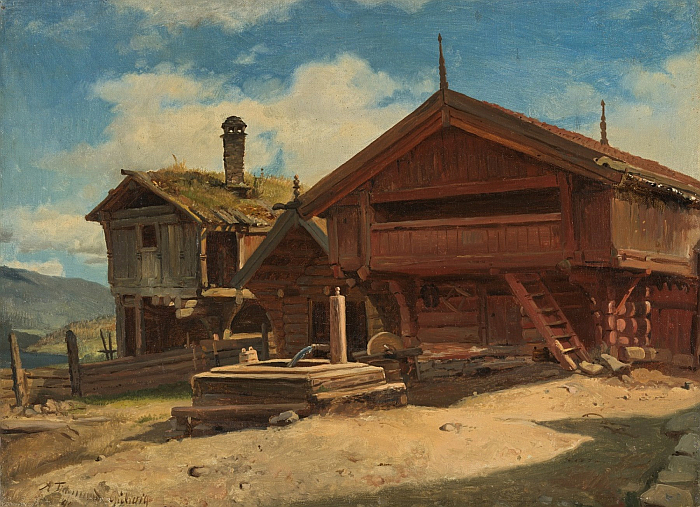
From the Farm Gulsvik in Hallingdal by Adolph Tidemand, 1848, part of Dragons and Logs, The National Museum, Oslo (Photo: Nasjonalmuseet / Børre Høstland, courtesy Nasjonalmuseet)
“Heart Sounds – The Pulse of Punk in the Dead Centre of Finland 1977–1992” at Aalto2, Jyväskylä, Finland
For all that punk is, certainly in its earliest manifestation, intimately associated with London, with the specific social and economic realities of late 1970s London, it was a moment expressed, lived, celebrated, across the globe, including in the apparent pastoral calm of central Finland. Or as the curators of Heart Sounds note, was an explosion of youthful anger and desire expressed “from Pihtipudas to Mäntyharju and from Keuruu to Kuopio”.
A moment in the cultural (hi)story of Finland, inarguably a far to rarely discussed moment, the Aalto2 museum promise to explore and investigate in the company of bands such as, and amongst others Luonteri Surf, Poliisivaltio or Maaseudun tulevaisuus, and thereby an exploration undertaken in the often underestimated, and regularly overlooked, variety of expressions of punk. Punk being anything but a monotonous homogeny.
Parallel to Heart Sounds Aalto2 are also presenting New Standards – Puutalo Oy 1940-1955, a showcase originally presented in the Finnish Pavilion at the 2021 Venice Architecture Biennale and which explores and documents the (hi)story of the standardised pre-fabricated houses of the manufacturer Puutalo Oy, a consortium of Finnish timber companies, and houses which not only provided immediate accommodation for those made homeless by the War but also stand as an important chapter in the (hi)story of housing construction and provision in Finland and further afield, then, and now.
Punk and standardised pre-fabricated housing…. a joyous juxtaposition of two diametrically opposed concepts which when viewed in parallel should, hopefully, allow for each to provide deeper insights into the other, allow for differentiated perspectives on the positions and world view advanced by the other, and thereby allow punk and standardised pre-fabricated housing to combine to force a questioning of the nature of the society we want going forward. Yes, we did think about combing the two to create the title Puutalo Oi!!! But decided against that. Although it would have been good.
And having questioned punk and standardised pre-fabricated housing you can then take yourself off to Aalto2’s permanent exhibition and question why its called AALTO – Work and Life and with a focus on Alvar Aalto…. weren’t there a couple of other Aaltos who were very closely involved in that work……? We haven’t seen AALTO – Work and Life, or at least not yet, we will, but judging by how its described by Aalto2 it very much sounds as if a bit of punk DIY ethos is needed to ensure women are properly recorded in the (hi)story of architecture in central Finland. Even in a town that was home to Wivi Lönn…….
Heart Sounds – The Pulse of Punk in the Dead Centre of Finland 1977–1992 is scheduled to open at Aalto2, Alvar Aallon katu 7, 40600 Jyväskylä on Saturday February 3rd and run until Sunday April 28th. Further details can be found at https://aalto2.museum
Tagged with: Aalto2, Allmänningen, Antropocen, Dragons and Logs, Form/Design Center, Galeria Rondo Sztuki, Halle 14, Heart Sounds, Jyväskylä, Katowice, Leipzig, Malmö, National Museum, Oslo, Technokrat*innen
